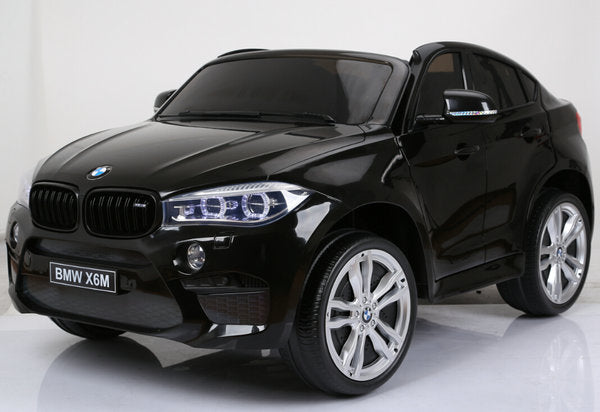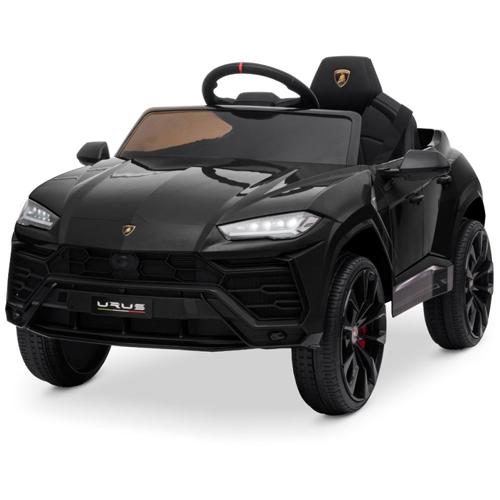Good Ideas On Picking Kids Ride On Cars
Wiki Article
What Should I Know About Battery Life And The Charging Time Of An Electric Ride On Kids Car?
Understanding the charging time and the battery's life span for the electric ride on your kids' car will help you ensure that your kids are entertained for a long time. Here's what you need to know to know: Type of Battery
The majority of electric ride-on vehicles designed for children are powered by rechargeable batteries. They are usually lithium-ion batteries or lead acid batteries. Lead-acid batteries take longer to charge and have less battery life.
Battery Capacity
The capacity of the battery can be measured in either amps-hours or watts. Batteries with higher capacity provide more time to play before needing to recharge.
Run Time -
The run time is the longest amount of continuous operation that an electric ride on car can provide on a single charge. This is influenced by factors like battery capacity, strength of motor, terrain or the weight of a rider.
Typical electric ride-on car run times range between 30 minutes to two hours per charge. But, lithium batteries that are high-capacity will provide longer running time.
Charging Time
Charging time is the amount of time needed to fully recharge the battery after it is depleted. The charging time may differ depending on the battery's capacity or specifications for the charger.
Charge times vary between 8 and 12 hours to full charge of electric ride-on automobiles. However, some models may provide faster charging times, especially using lithium-ion batteries.
The longevity and safety of batteries depend on charging the battery in accordance with the specifications of the manufacturer. Undercharging or overcharging the batteries can result in detrimental effects on their performance as well as longevity.
Charge Methods Charge Methods
Electric ride-on vehicles are usually equipped with a charging station that can be connected to an ordinary household outlet. Certain models come with fast-charging features, or come with a charger that changes the rate of charging depending on the state of the battery.
To prevent battery damage or harm to electrical systems, ensure the charger with the ride on vehicle is compatible with the charging port.
Additional Batteries
Some electric ride-on vehicles offer the option to purchase extra batteries, or even spare batteries for extended playing time. You can replace the worn-out batteries with new ones which are fully charged which means you can reduce the time between sessions.
If you know the battery time and charge times of an electric ride-on kids' vehicle, you can ensure that your kids will enjoy fun and uninterrupted playtime as they explore their surroundings. Regularly charging the battery and following proper charging practices will help increase the battery's life and performance. Take a look at the recommended Audi ride on car for blog examples including childs ride on car, toy car, ride on toy, race car toy, remote control childrens electric cars, ride electric car, toy cars, digger ride, ride of car, toy cars and more. .

How Are Kids Car Models Designed For Indoor And Outdoor Use?
Cars for children include specific features for various environments and usage scenarios, whether they are indoors. This is how the designs differ from indoor Use Cars The Indoor Use Cars
Dimension and weight: Cars that are designed for indoor use tend to be lighter, smaller and more maneuverable in narrow spaces, like living rooms, hallways, or playrooms. These cars are small and compact, which allows them to effortlessly navigate through narrow spaces or around corners.
Low Ground Clearance: Indoor-use cars have a low ground clearance, which means they won't be snagged or stuck by obstacles such as rugs thresholds, or carpets. This permits smooth, unhindered motion across indoor surfaces.
Smooth Wheels. The wheels utilized in indoor vehicles can be made out of materials such as rubber, plastic, or laminate to give them the traction. These wheels are designed for indoor use to minimize noise, and keep surfaces safe from scratches.
Limit Speed - Vehicles designed for indoor use usually have reduced maximum speeds in order to provide that they are safe and controlled within restricted areas. This can help avoid collisions with furniture, walls or any other indoor obstructions.
Outdoor Use Cars -
Durable construction - Outdoor cars are constructed with durable materials, like steel or tough plastic to withstand the rigors of handling and elements of nature, such as temperatures, humidity, and sunlight fluctuations. They are resistant to damage caused by outdoor elements.
Higher Ground Clearance for Outdoor Use vehicles have greater ground clearance to navigate uneven terrain, bumps, or other obstacles that are encountered outside. This allows the car to move over rough surfaces without damaging or getting stuck.
Traction Tires Car tires used for outdoor use usually have treads, or patterns that enhance grip and traction when driving over uneven or slippery surfaces. This ensures stability and control over the outdoors to avoid sliding or skiing.
Weather Resistant Components - Vehicles for outdoor use may include weather-resistant components like electronic components that are sealed and waterproof casings, as well as the rust-resistant materials. These features shield the vehicle from water and environmental harm. These vehicles can take on the elements of rain, mud and even puddles, without any loss of performance.
Outdoor-use cars have higher speeds to cover vast areas and distances. Children can have an exciting and thrilling ride.
Parents can pick a car for their kids that is suitable to their requirements, whether indoors or outdoors, by evaluating the features and design. This will provide an enjoyable, safe and lasting play experience. Read the best JCB ride on toys for more info including ride on toy, electric car ride, ride on car, car on ride, ride of car, race car toy car, 2 seater electric cars, car for toy, childrens electric cars, two seater childrens electric cars and more. .

What Are The Different Types Of Remote Controlled Cars For Children? What Are The Pros And Cons Of These Vehicles?
Remote control cars for children are also referred to as RC cars or remote-controlled automobiles are available in different sizes and styles. They also come in a variety of price ranges to suit different budgets and tastes. This article will provide an overview of the types, sizes and prices of children's remote controlled cars, along with their pros and cons.
Electric RC Cars – These are remote-controlled, battery-powered cars which can be used inside and outside. They are available in different styles such as buggies or trucks.
Nitro RC Cars – Gas-powered remote-controlled cars that offer more power and performance, but greater maintenance and knowledge is required in order to operate. Electric RC cars are smaller and less expensive.
Scale Models (Remote-controlled replicas) - These are miniatures of real-life automobiles like cars, trucks or planes. Scale model sizes range from 1-10 to 1--24. Larger models offer greater quality and greater realistic.
Sizes -
The sizes of remote-control cars for children vary from tiny micro-sized models to larger-scale versions. The weight and size of the car will affect the performance.
Micro-sized vehicles which are lightweight and small, are great for indoor use and also by young children. The larger models offer greater performance and endurance, making them suitable for off-roading and racing.
Prices
Prices vary based on dimensions, features and the build quality.
Electric and Nitro RC cars on a larger scale may cost between $100 and $500.
Models and top-of-the-line hobby RC cars cost from several hundred dollars up to 1000 dollars, depending on the level of detail.
Pros and Cons
Pros -
Entertainment - Children's remote control automobiles can bring hours of excitement and enjoyment for both children and adults.
Skills Development: Operating an RC vehicle assists in developing hand-eye coordination, spatial awareness and problem solving skills.
Social Interaction. The RC car encourages social interaction and can be enjoyed by both friends and families.
Customization - Many RC automobiles can be modified by utilizing accessories, aftermarket components, upgrades and other accessories that can enhance the performance and look.
Cons
Cost - Top-quality remote controls for children's cars can be expensive and can be expensive, particularly models that are hobby-grade with advanced features.
Learning Curve - Operating an RC car requires practice and expertise, and smaller youngsters may have difficulty when it comes to the controls at first.
Maintenance - RC vehicles require regular maintenance, which includes cleaning, lubrication, and periodic repairs or replacement of parts.
Safety concerns RC cars pose a safety risk, and can cause electrocution, collisions and falls if not used under adult supervision.
In general, remote-controlled children's vehicles provide a thrilling as well as educational experience for children of all ages. However, it's important to think about factors such as dimensions, cost, features, and safety when selecting the best car for your child. Hobby-grade RC vehicles are appropriate for older children and enthusiasts, while simpler models are best for young kids and novices. Read the top rated McLaren kids car for site recommendations including two seater childrens electric cars, childs car toy, toy with car, a toy car, two seater electric cars, remote control childrens electric cars, electric ride on cars, car toy car toy, toy cars toy car, remote control childrens electric cars and more. .
